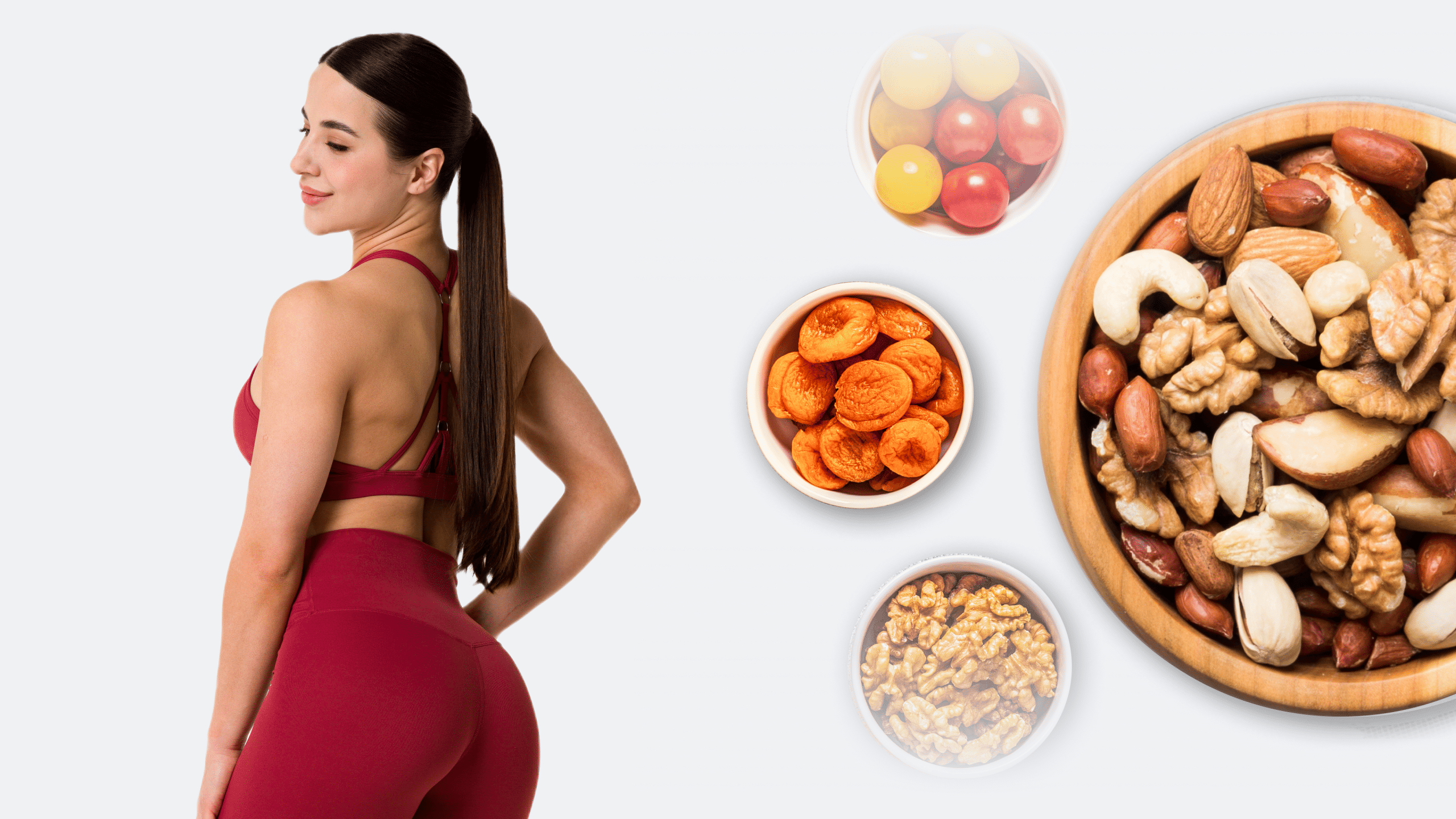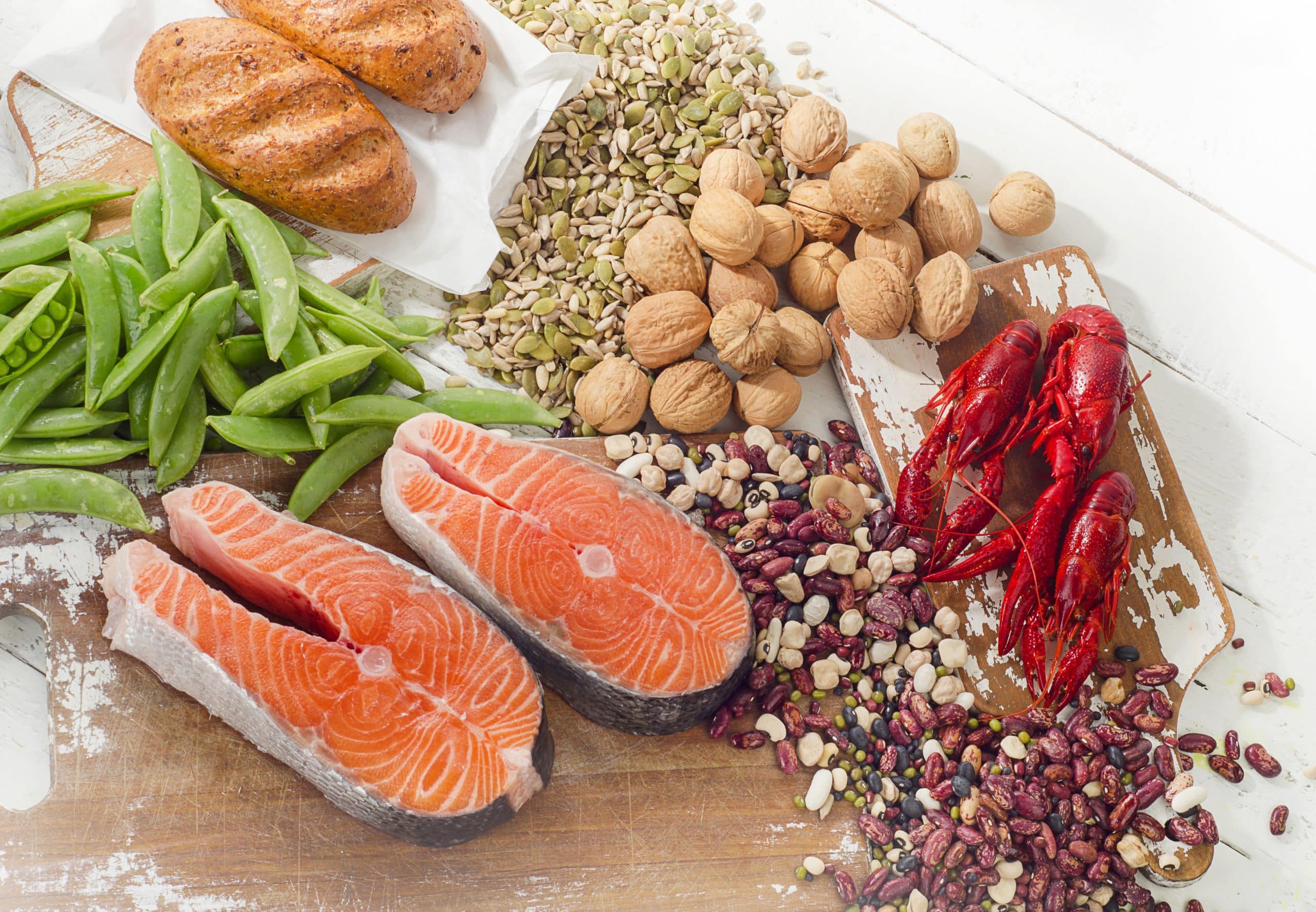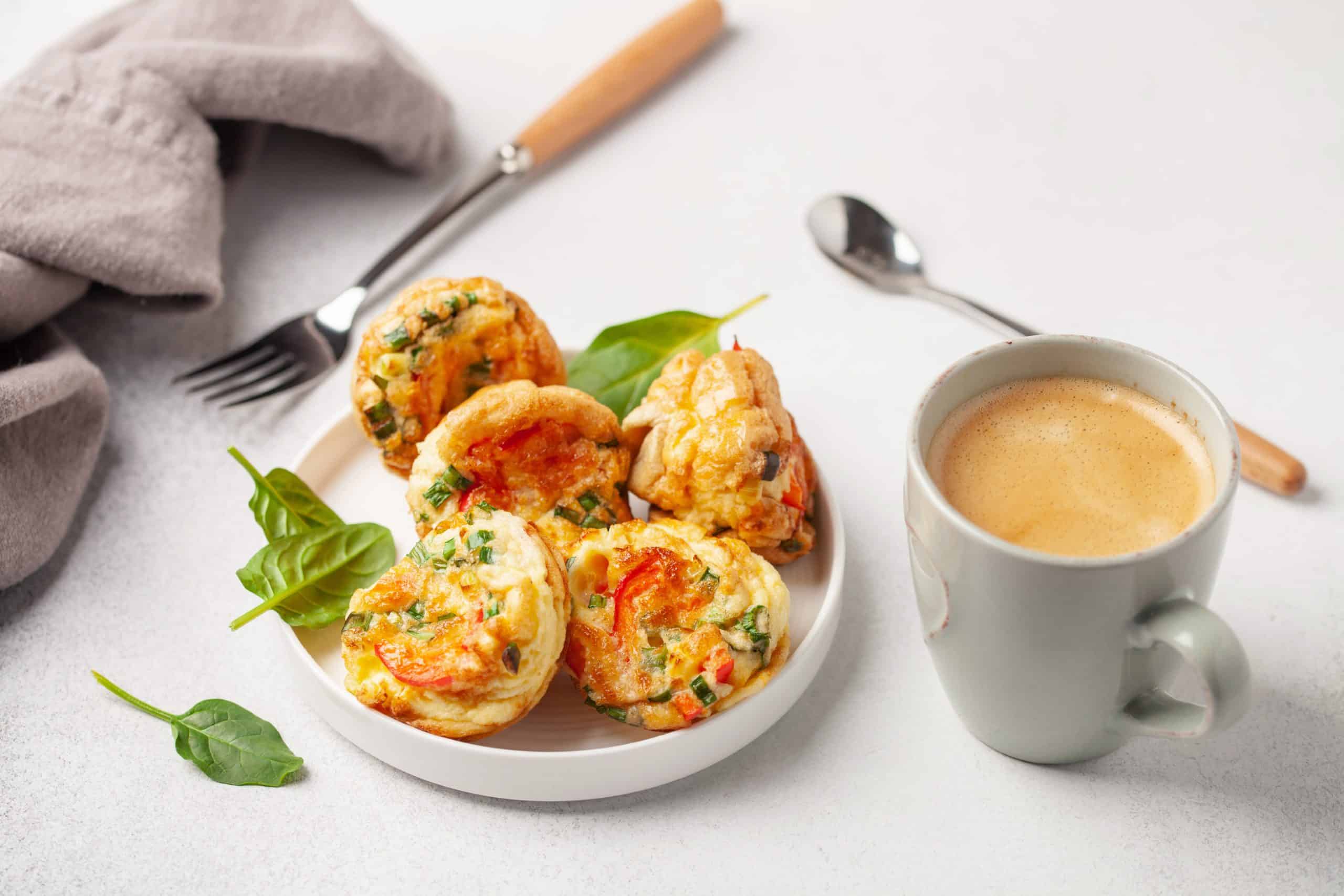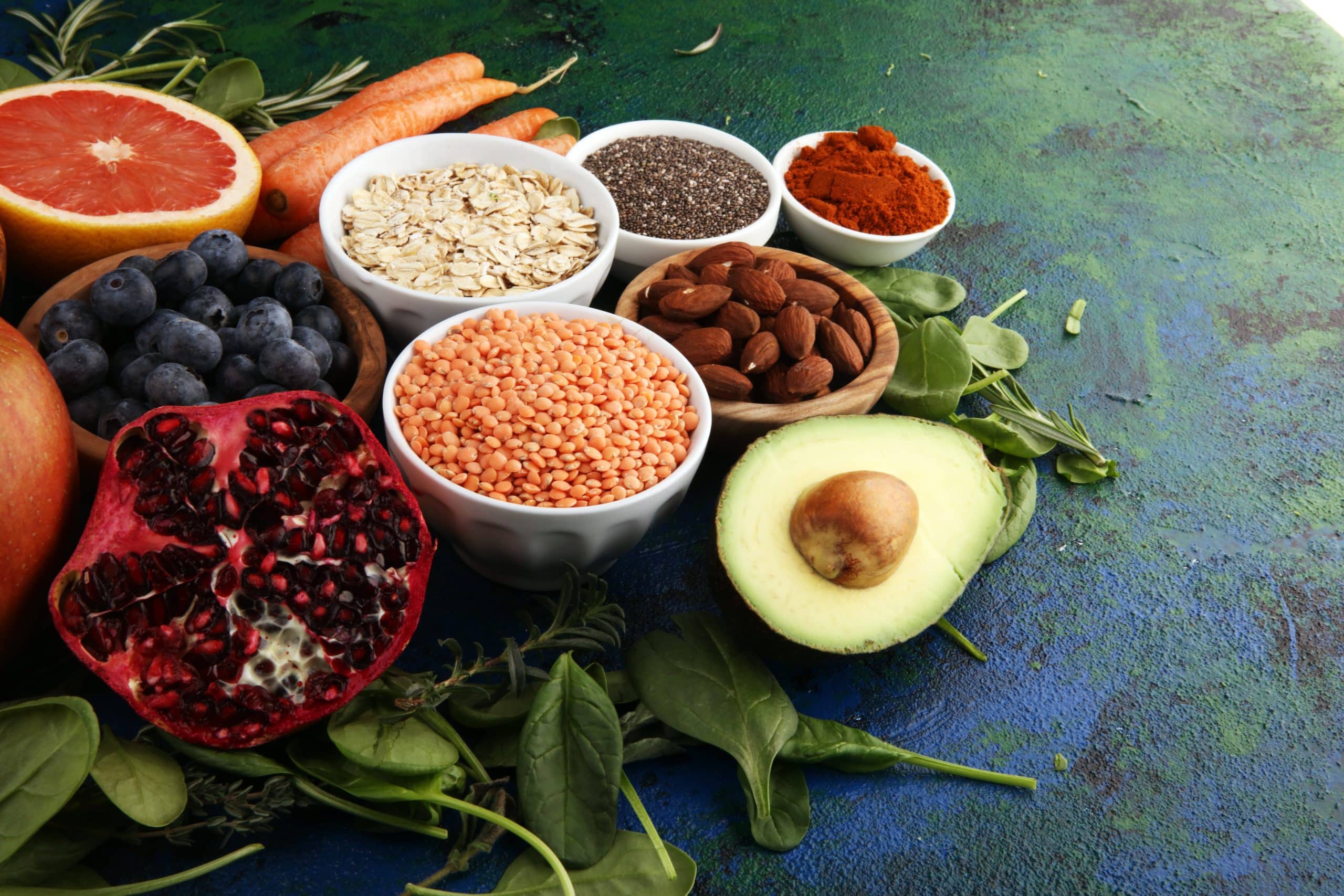Everybody craves delicious meals. They don’t necessarily need to be sweet to satisfy your taste buds. You could be craving something bitter, salty, sour, or pungent. One of the most common cravings you may have is for something salty. Although salt is integral in our diet, it may also have some adverse health effects.
Therefore, you may be asked to regulate your salt intake, and perhaps opt for salt-free snacks. Although this may be challenging if you love salt-packed snacks, it will save you from a whole myriad of health problems.
The problem is that it’s tricky to determine these salt-free snacks, particularly if you’ve never tried them before. Interestingly, these are common foods, but you may not have taken note of their salt content.
These salt-free snacks vary according to their taste, texture, and calorie content. The good thing is that they’re all healthy. Read on as we explore more of these snacks and recommend some you should consider incorporating into your daily menu.
How Much Salt Is Enough?
Salt is one of the most commonly used spices. It contains sodium and is used for seasoning meals. Although it sounds like a necessity in meals, too much of it can be detrimental to your health.
For example, when you consume large quantities of sodium, you increase your risk of conditions such as hypertension and cardiovascular disease. Therefore, it is advised to stick to a certain limit, so you should opt for salt-free snacks whenever possible to regulate your sodium intake.
Experts suggest that adults consume no more than 2,000 mg of sodium in a day (7) – even less if you have congestive heart failure. In this case, they recommend you limit your sodium intake to less than 1, 500 milligrams a day (9).
How to Maintain Normal Salt Intake
There are various methods you can apply to help you abide by this limit. They include:
Reading Labels
It may be difficult to track your sodium content as it’s often hidden in most foods. What you can do is evaluate the sodium content of each food during grocery shopping. Here’s what you need to know about the sodium food labels:
Very low sodium
If you see this, it means that this particular food has less than 35 milligrams of sodium in one serving.
Reduced or less sodium
This means that the food in question contains less than 25% of sodium than usual in each serving.
Light in sodium
Such a label indicates that this food has at least 50% sodium content in each serving.
Determining Your Sodium Intake Requirement
You can also regulate your sodium intake if you understand how much is recommended for you to consume. Ideally, you should get professional help from a registered dietitian.
You can also learn how to calculate sodium intake at home. According to experts, salt is 40% sodium (1). Therefore, if the label lists sodium content instead of salt, you should multiply this figure by 2.5.
The answer will be the equivalent of the salt content in your food. For example, if a food has 1 gram of sodium, multiply this by 2.5 to get the specific salt content. When you do this, you’ll discover the food in question has 2.5 grams of salt.
Cooking Your meals
Cooking your meals can help limit your salt intake, particularly when you decide to start consuming a low-sodium diet. This is because when you decide to eat out, you’re more likely to consume processed foods.
These include foods such as pizza, fries, and other fast foods. Most processed and prepared foods tend to have high amounts of salt and sodium additives in them (17). Therefore, the more you eat them, the more sodium you consume.
You can control this by preparing your meals at home. In this way, you’ll be in charge of how much salt you use, the foods you use, and how you prepare your meals. You have more control to limit foods that naturally contain sodium when cooking.
These include foods such as meat, shellfish, and some dairy products. While they don’t contain high sodium levels, being cautious when using them will help limit your overall daily sodium intake.
Eating Salt-Free Snacks
Interestingly, most of the foods we cook contain salt. Therefore, when we add table salt for seasoning purposes, we increase the salt content of the overall meal. It has been acknowledged that eating too much salt can be harmful to our health.
Similarly, eating too little can also be harmful and can result in low sodium content, which can cause diarrhea, vomiting, heart failure, small intestine blockage, and Addison’s disease (11). Therefore, make sure you never go below the recommended daily salt intake level.
BetterMe app is a foolproof way to go from zero to a weight loss hero in a safe and sustainable way! What are you waiting for? Start transforming your body now!
Best Salt-Free Snacks
Eating salt-free snacks can help you stay on track with your daily sodium intake. The best salt-free snacks to consider when following a low-sodium diet include:
Oatmeal
Oatmeal has proven to be a whole-grain powerhouse that keeps up with all health trends. It has numerous health benefits, which may explain why it has become a staple in most households.
Some of the benefits of eating oatmeal include (15):
- Easing constipation due to its high source of soluble fiber
- Lowering your blood sugar levels
- Providing your body with antioxidants
- Promoting healthy bacteria in your gut
- Helping you feel fuller for longer, thereby helping with weight management and control
- Relieving any skin itching and irritation
- Reducing the risk of colon cancer
Oatmeal is salt-free, which makes it a great salt-free snack option. There are various ways you can choose to have your oatmeal. You can eat oatmeal porridge, overnight oats, or oats with toppings.
If you decide to add some toppings, remember to avoid those with a high salt or sugar content. For example, you can add a spoonful of honey to make the snack flavorful. Again, remember to be mindful of your portions.
Remember that you’re only eating these oats as a snack. One cup of cooked oatmeal accounts for approximately 166 calories (5), so make sure you measure how much you want to eat to avoid exceeding your daily energy requirements.
Carrots Paired with Hummus
Carrots are also healthy salt-free snacks you can consider including in your low-sodium diet plan. They tend to have a sweet, bitter, or earthly taste. As with oatmeal, carrots too have numerous health benefits. They include:
- Providing you with beta-carotene, a compound that is responsible for vitamin A. Vitamin A helps keep your eyes healthy and protects them from the sun. As a result, you will have a lower risk of cataracts and other eye problems.
- Providing you with antioxidants that help lower your cancer risk.
- Boosting your immune system as carrots help in building antibodies in your body.
- Improving your heart health.
- Preventing constipation.
- Strengthening your bones as carrots contain calcium and vitamin K that are primary for bone health.
- Helping to control diabetes as its fiber helps control your blood sugar levels.
As with any other snack, you also need to consider the nutritional value of carrots. A one-half cup serving of carrots has 2 grams of fiber, 3 grams of sugar, and 25 calories (4). When eating them as snacks, it is good to pair them with hummus.
Carrot sticks and hummus are a healthy snack that is incredibly satisfying. So, grab some hummus and dip your carrots in it for more flavor and health benefits.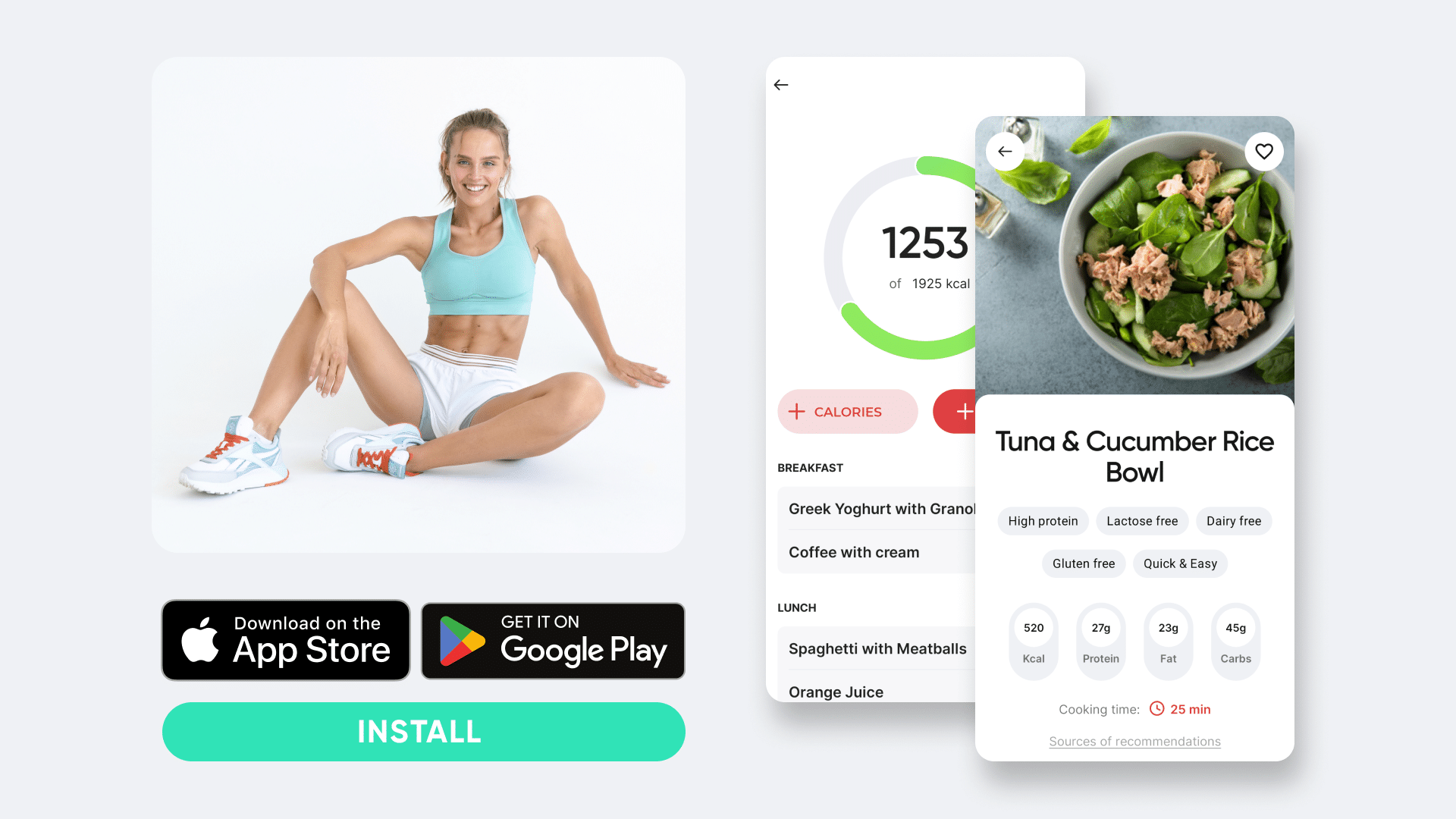
Strawberry Sorbet Smoothie
The strawberry sorbet smoothie is a great snack option if you want to replace your salt cravings with sweet ones. It has high sugar levels and low salt content. Experts recommend you order a sorbet if you happen to be outdoors and on a low-sodium diet plan (14).
However, if you’re at home, you can prepare it yourself. It will only take 10 minutes and the recipe is as follows:
Ingredients
- 2 pounds fresh strawberries, 1 tbsp lemon juice, 1/2 cup water, 1/2 cup sugar, and 2 tsp vanilla extract.
Preparation
- Blend the strawberries until you get a smooth puree.
- Mix the water, vanilla extract, lemon juice, and sugar in a saucepan. Heat and stir until the sugar dissolves in the mixture.
- Mix the strawberry puree with this mixture. Stir and refrigerate for at least four hours.
Nutritional Information
The above sorbet recipe makes a puree to fill at least 3 1/2 cups. The nutritional content for each cup is as follows (18):
- Calories – 234 kcal
- Total fat – 0 g
- Cholesterol – 0 mg
- Fiber – 0.7 g
- Protein – 0.3 g
- Total sugars – 58 g
- Potassium – 80 mg
Read more: Kale Chips Keto Recipes: 3 Recipes and 12 Seasonings for Keto-Friendly Snacks
Peanut Butter and Banana
Peanut butter and banana is a healthy snack that provides your body with fiber, minerals, vitamins, and phytochemicals. There are various brands of peanut butter, and if you want to find one with less salt content or no salt at all, you must double-check the labels on the jars. Most labels include sodium instead of salt, so take note of this and use this to calculate the salt content in the peanut butter.
Eating this combination will give your body both proteins and carbs. If you want to switch things up, you can prepare a peanut butter banana smoothie. As with any other smoothie or liquid diet, it’s important to remember to be cautious with the servings you consume.
Unsalted/Air-Popped Popcorn
Another item you should consider adding to this healthy salt-free snacks list is popcorn. However, it must be either unsalted or air-popped popcorn. These are two healthy popcorn options that contain no sugar or salt.
Therefore, you should consider these two picks when you’re looking for sugar-free or salt-free snacks. If you decide to prepare air-popped popcorn, here’s what you need to do:
- Air-pop the corn without adding any salt to it.
- You can choose to add either some tasty margarine or butter if you want to enhance the flavor. If not, you can sprinkle some grated parmesan or Cheddar cheese over it.
The nutritional values of air-popped popcorn are as follows (2):
- Fiber – 5 g
- Fat – 1.4 g
- Protein – 4 g
- Calories – 122 kcal
- Total carbohydrates – 25 g
- Saturated fat – 0.2 g
- Polyunsaturated fat – 0.6 g
- Monounsaturated fat – 0.4 g
- Magnesium – 16% of recommended daily allowance (RDA)
- Zinc -10 % of RDA
- Selenium – 8% of RDA
- Folic acid – 6% of RDA
If you opt for unsalted popcorn, you can prepare it the old-fashioned way. You’ll need to:
- Pick up your ingredients. They include 1/2 cup popcorn and 1 tablespoon of canola oil.
- Pop your corn over the stove. Remember to use a healthy cooking oil option such as canola oil.
- Cover your pan, but leave it slightly agape to allow the steam to escape. At no point should you add any salt.
If you prepare a one-cup serving of unsalted popcorn, its nutritional information will be as follows:
- Calories – 160 kcal
- Fat – 6 g
- Saturated fat – 0.3 g
Greek Yogurt
You can also opt to consume some Greek yogurt when you want a snack. It’s one of the healthiest, creamiest, and tastiest dairy products you can choose to have. It has numerous health benefits, including (8):
- Prevents anemia. Greek yogurt is rich in vitamin B12, which helps prevent pernicious anemia.
- Improves your bone health. Yogurt is rich in calcium, a mineral that is vital for healthy bones.
- Improves your digestive health. Greek yogurt supports healthy bacteria that improve the abilities of your digestive system. This dairy product may also help regulate your bowel movements.
- Improves your heart health. Regularly consuming Greek yogurt lowers your cholesterol levels, which significantly reduces your risk of heart disease.
- Lowers your risk of diabetes.
Nutritional Analysis
The nutritional content of one cup of this yogurt is as follows:
- Calories – 150 kcal
- Protein – 19 g
- Total carbohydrates – 9 g
- Total fat – 5 g
- Total sugars – 9 g
- Fiber – less than 1 g
Remember to check your portion sizes when consuming this dairy product. Greek yogurt usually contains either nonfat or whole milk. The total calories will vary depending on what milk or fat content is used. Being cautious of such things can help you avoid creating a calorie surplus.
Unsalted Almonds
Another salt-free snack you can add to your low-sodium diet plan is unsalted almonds. Almonds are incredibly healthy and packed with potassium, magnesium, and vitamin E. They help you in the following ways (3):
- Lower low-density lipoprotein (LDL) cholesterol. LDL cholesterol is often referred to as bad cholesterol due to its detrimental health effects.
- Build bones. Almonds have calcium, which helps keep your bones healthy. Eating almonds regularly gives your body calcium, which prevents your risk of bone breaks and fractures.
- Suppress hunger, which helps promote weight loss.
- Reduce blood pressure and blood sugar levels.
- Improve sleep quality, particularly if eaten before bed.
- Fight depression and anxiety. Almonds contain a mineral called selenium that helps with this.
Remember to only consume unsalted almonds as you’re opting for salt-free snacks. You must also regulate how many almonds you eat to maintain your daily calorie range.
Low-Fat and Low-Sodium String Cheese Stick and Fresh Fruit
Another salt-free snack you can choose to consume is low-fat and low-sodium cheese string with fresh fruit. This snack is rich in minerals and vitamins such as vitamin C and calcium.
When selecting fruits, the key is to choose fresh ones instead of frozen options. The best fruit for this recipe is strawberries. Similarly, when buying cheese, read the food labels to determine that it is low in fat and sodium.
If you eat one low-fat cheese stick and one cup of fresh strawberries, your nutritional intake will be:
- Calories – 110 kcal
- Total fat – 5 g
- Total carbohydrates – 12.7 g
Intense sweat sessions, working weight loss tips, lip-smacking recipes come in one package with the BetterMe app. And all of it is at your fingertips, start transforming your life now!
FAQs
How can I tell if my body needs more salt?
Your body needs salt, or sodium, for various physiological functions, including maintaining fluid balance, nerve function, and muscle contraction. Signs that your body may need more salt can include:
- Dizziness, lightheadedness, muscle cramps, fatigue, and headache (12). These symptoms often arise because sodium helps retain water in your body, and a deficiency can lead to dehydration and electrolyte imbalances.
- A sudden drop in blood pressure, particularly when standing up quickly (orthostatic hypotension), can be an indicator of low sodium levels (16).
- Craving salty foods can be your body’s way of signaling a need for more sodium (19).
- Chronic conditions such as Addison’s disease or the use of diuretics can also lead to low sodium levels (6).
However, it’s important to distinguish between these symptoms and other potential health issues. If you suspect you have a sodium deficiency, it’s important to consult a medical professional for appropriate testing and guidance. Self-diagnosing and over-consuming salt can lead to hypertension and other cardiovascular issues, so professional advice is essential.
Can I eat pizza on a low-sodium diet?
Eating pizza on a low-sodium diet can be challenging because traditional pizza ingredients such as cheese, processed meats (pepperoni, sausage), and even the crust often contain high amounts of sodium. However, it’s possible to enjoy pizza while adhering to a low-sodium diet by making the following mindful choices:
- Opt for a homemade pizza where you can control the ingredients.
- Use a low-sodium pizza crust or make your own from scratch using whole-grain flour and minimal salt.
- Choose fresh vegetables as toppings, such as bell peppers, onions, tomatoes, and spinach, which naturally contain less sodium.
- For protein, select lean and low-sodium options such as grilled chicken or turkey.
- If you must have cheese, look for low-sodium varieties and use them sparingly.
- Avoid pre-packaged sauces and instead make your own tomato sauce with fresh tomatoes, herbs, and spices without adding salt.
- When dining out, look for restaurants that offer customizable pizza options, or check if they provide nutritional information online to make a more informed choice.
Always balance your meals by reducing your sodium intake in other parts of your diet throughout the day to compensate for the higher sodium content in pizza.
Do bananas flush out sodium?
Bananas don’t directly “flush out” sodium, but they can contribute to maintaining a healthy sodium-potassium balance, which is essential for the regulation of blood pressure and fluid balance (10). Bananas are rich in potassium, a mineral that helps counteract the effects of sodium in the body. High potassium intake encourages the kidneys to excrete more sodium through urine, which helps the body lower blood pressure and reduce the risk of hypertension. This is a natural bodily process for maintaining electrolyte balance and proper function of muscles and nerves.
Eating potassium-rich foods such as bananas can be particularly beneficial if you consume a diet that is high in sodium. Other potassium-rich foods include sweet potatoes, spinach, avocados, and beans. To maximize the benefits, it’s important to adopt a diet that’s rich in potassium and low in sodium. This means reducing your intake of processed foods and salty snacks and adding more fresh fruits, vegetables, and whole grains to your diet.
What foods have no sodium at all?
Foods with no sodium at all are generally unprocessed, whole foods that haven’t been exposed to salt during preparation or preservation. These include:
- Most fresh fruits and vegetables, such as apples, oranges, berries, bananas, leafy greens, and root vegetables such as carrots and potatoes.
- Fresh herbs and spices, such as basil, thyme, and garlic, are also naturally sodium-free, which makes them excellent choices for seasoning food without adding salt.
- Plain grains such as rice, quinoa, and oats contain no sodium when they’re cooked without added salt.
- Unsalted nuts and seeds can also be a part of a sodium-free diet.
- Animal products such as fresh, unprocessed meat, poultry, and fish.
All of the above-listed products have minimal natural sodium and can be part of a low-sodium diet, especially when prepared without added salt or sodium-containing marinades and sauces. It’s important to read labels carefully, as many packaged and processed foods, even those that seem healthy, can contain added sodium.
For a truly sodium-free diet, you should focus on cooking meals from scratch using whole, unprocessed ingredients and be cautious with condiments and pre-packaged foods. This approach helps manage sodium intake and ensures a diet that is rich in essential nutrients.
The Bottom Line
There are many snacks you can choose to eat whenever you feel like snacking. They range from apples, smoothies, cheese, and fruits to a wide variety of salad dressings. However, the list tends to become smaller when you’re following a low-sodium diet.
It can be tricky to determine salt-free snacks that can help you sustain your low-sodium meal plans, but we’ve helped you in this article by analyzing some of the best salt-free snacks. These include unsalted or air-popped popcorn, carrots with hummus, unsalted almonds, oatmeal, strawberry sorbet, and peanut butter and banana. Remember to consult a dietitian to ensure you’re consuming the right amount of sodium.
DISCLAIMER:
This article is intended for general informational purposes only and does not serve to address individual circumstances. It is not a substitute for professional advice or help and should not be relied on for making any kind of decision-making. Any action taken as a direct or indirect result of the information in this article is entirely at your own risk and is your sole responsibility.
BetterMe, its content staff, and its medical advisors accept no responsibility for inaccuracies, errors, misstatements, inconsistencies, or omissions and specifically disclaim any liability, loss or risk, personal, professional or otherwise, which may be incurred as a consequence, directly or indirectly, of the use and/or application of any content.
You should always seek the advice of your physician or other qualified health provider with any questions you may have regarding a medical condition or your specific situation. Never disregard professional medical advice or delay seeking it because of BetterMe content. If you suspect or think you may have a medical emergency, call your doctor.
SOURCES:
- About Sodium and Health (2024, cdc.gov)
- A Snack That Pops: Popcorn (2006, webmd.com)
- A Comprehensive Review of Almond Clinical Trials on Weight Measures, Metabolic Health Biomarkers and Outcomes, and the Gut Microbiota (2021, ncbi.nlm.nih.gov)
- Carrots (2020, webmd.com)
- Cooked Oatmeal (n.d., nutritionix.com)
- Diuretic-induced hyponatremia (1999, pubmed.ncbi.nlm.nih.gov)
- Guidelines for a Low Sodium Diet (n.d., ucfshealth.org)
- Health Benefits of Yogurt -An Ideal Probiotic: A Review (2023, researchgate.net)
- Heart Failure and a Low-Sodium Diet: What to Know (2020, webmd.com)
- How Potassium Can Help Control High Blood Pressure (n.d.; heart.org)
- Hyponatremia (n.d., mayoclinic.org)
- Hyponatremia (low sodium level in the blood) (n.d.; kidney.org)
- Low-Sodium Diet: How to Eat Less Sodium at Restaurants (2009, webmd.com)
- Nutty About Peanut Butter (2008, webmd.com)
- Oats: A Review of Health-Beneficial Properties (2021, ncbi.nlm.nih.gov)
- Orthostatic Hypotension (2023, ncbi.nlm.nih.gov)
- Sodium: How to tame your salt habit (2019, mayoclinic.org)
- Strawberry Sorbet (n.d, nutritionix.com)
- The biopsychology of salt hunger and sodium deficiency (2015, ncbi.nlm.nih.gov)

